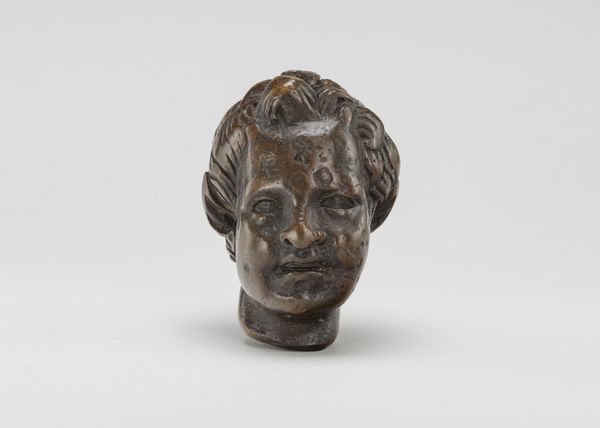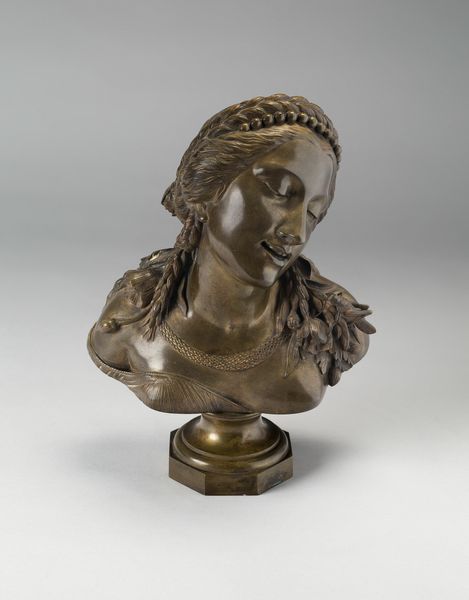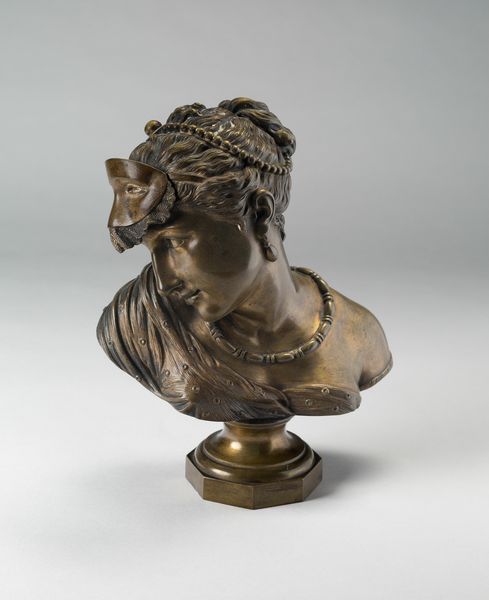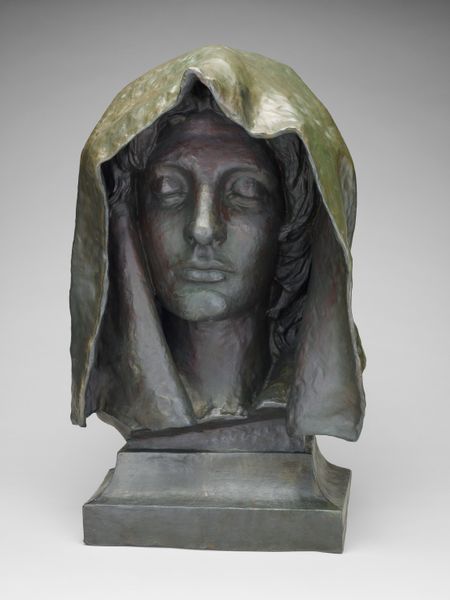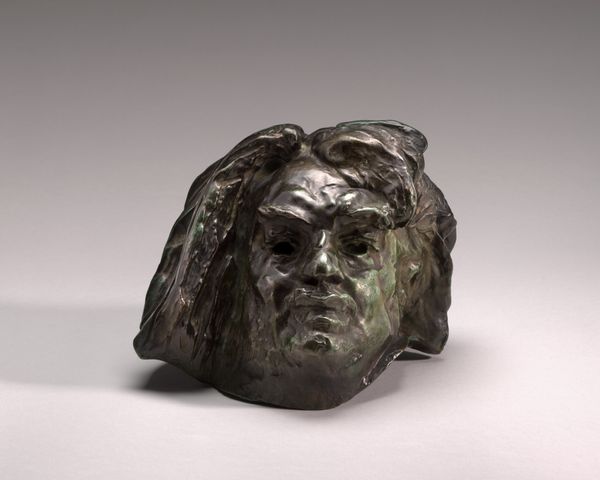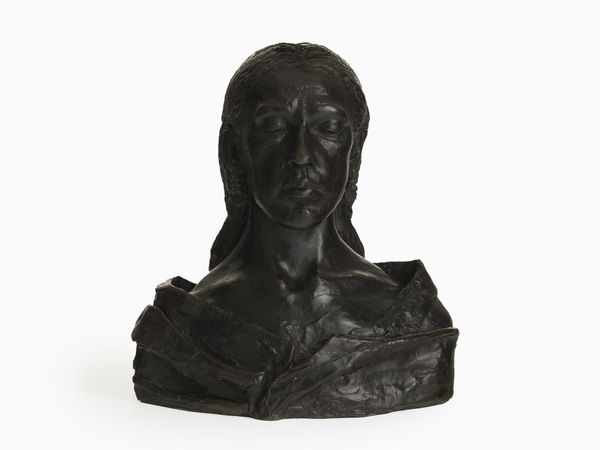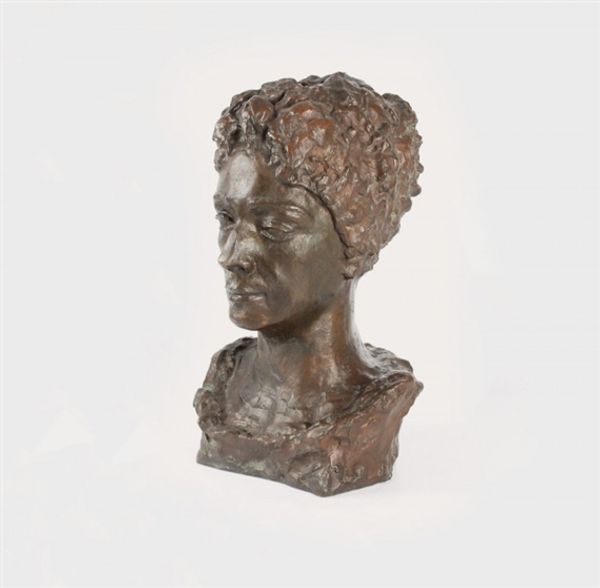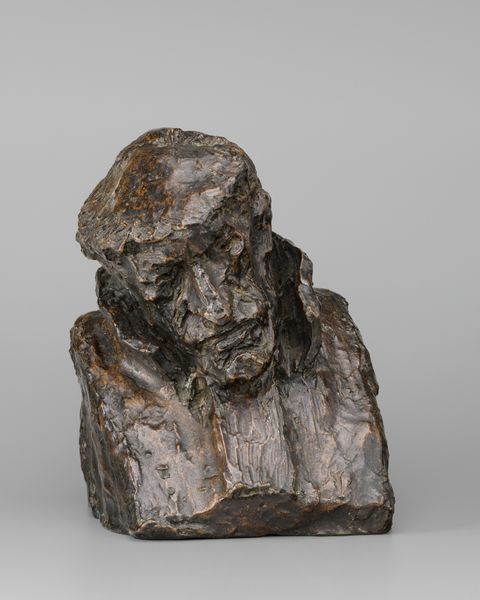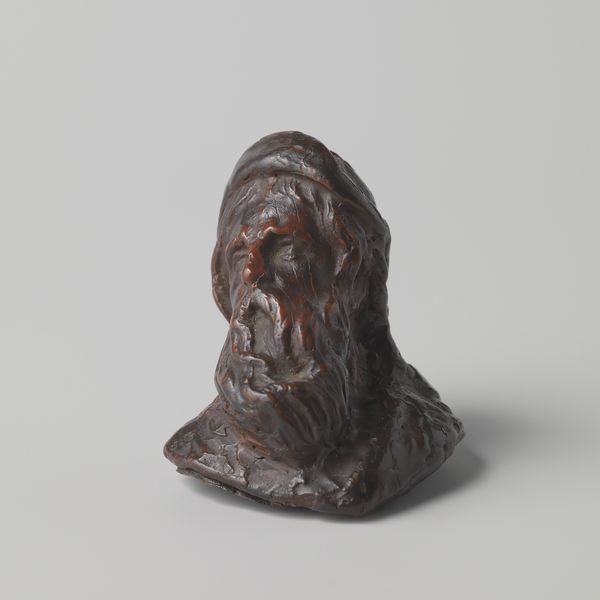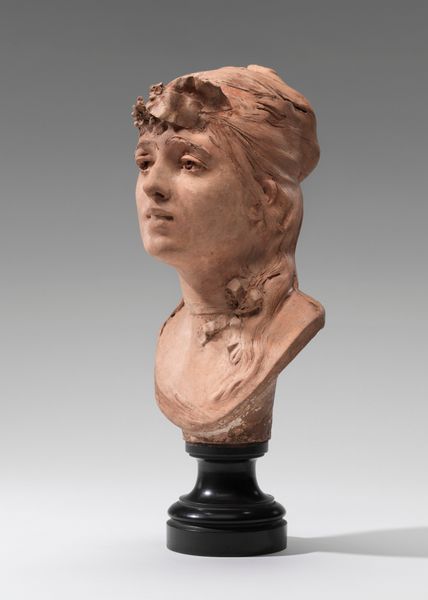
bronze, sculpture
#
portrait
#
sculpture
#
bronze
#
figuration
#
sculpture
#
italian-renaissance
Dimensions: overall: 7.9 x 6.7 x 4.9 cm (3 1/8 x 2 5/8 x 1 15/16 in.)
Copyright: National Gallery of Art: CC0 1.0
This is Andrea Riccio’s small bronze bust of a youth, possibly Saint John. Note how the artist uses the materiality of bronze to convey a sense of classical antiquity. The sculpture is composed of smooth planes and curvilinear lines that suggest a youthful face. This is framed by the dense, textured curls of his hair which create a visual rhythm that leads the eye around the sculpture. The formal arrangement emphasizes the play of light and shadow across the bronze surface. The structure of the piece is clearly influenced by classical sculpture, but Riccio manipulates the material to create a softer, more humanistic portrayal. The artist has used texture and form to explore a tension between classical ideals and Renaissance humanism. Consider the interplay between the tactile qualities of the bronze and the idealized form of the youth. How does this relationship engage with broader cultural and philosophical dialogues about beauty, representation, and the legacy of classical art?
Comments
No comments
Be the first to comment and join the conversation on the ultimate creative platform.
